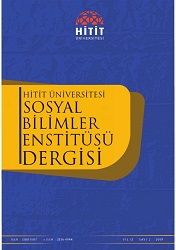Türkiye’de bölgesel gelir dengesizliği: işgücü başina gelir yakinsamasi
Regional Income Imbalance in Turkey: Convergence of Income Per Labor Force
Author(s): Mustafa NalSubject(s): National Economy, Labor relations, Social differentiation, Economic development, Human Resources in Economy, Socio-Economic Research
Published by: Hitit Üniversitesi Sosyal Bilimler Enstitüsü
Keywords: Convergence Hypothesis; Income Per Labor Force; Income Per Person; Regional Income Imbalance;
Summary/Abstract: Turkey is a major income disparity between regions within countries. Many studies have been done to test how this situation changes over time with the convergence hypothesis. This test is based on the empirical analysis of the per capita income variable for a time interval. But the sociological structure in Turkey (family size, the number of employees in the family, the labor force participation rate, etc.) changed over time. In addition, the sociological structure is also different between the regions of Turkey's. The use of per capita income as a proxy variable in the measurement of average productivity includes the effect of these changes. In this study, regional convergence was investigated with the income variable per labor force. In this study, nonlinear least squares, which is the traditional method in this field, is preferred. The study covers the period of 2004-2017 and all data were obtained from TURKSTAT database. According to the results obtained in this study, regional and provincial income disparities has decreased the period after 2004 in Turkey. The convergence rate of income per labor force is higher than the per capita income convergence rate. According to the estimation made with additional variables reflecting regional differences, the conditional convergence rate is higher than the absolute convergence rate. In addition, the additional variable has increased the explanation power of the econometric estimation. These findings suggest that in the period after 2000 changes in the social structure and increase in the level of urbanization have increased the convergence rate. Participation rate of female workers and incentive of employment can be used as a long-term policy in reducing regional income disparities.
Journal: Hitit Üniversitesi Sosyal Bilimler Enstitüsü Dergisi
- Issue Year: 12/2019
- Issue No: 2
- Page Range: 469-480
- Page Count: 12
- Language: Turkish

